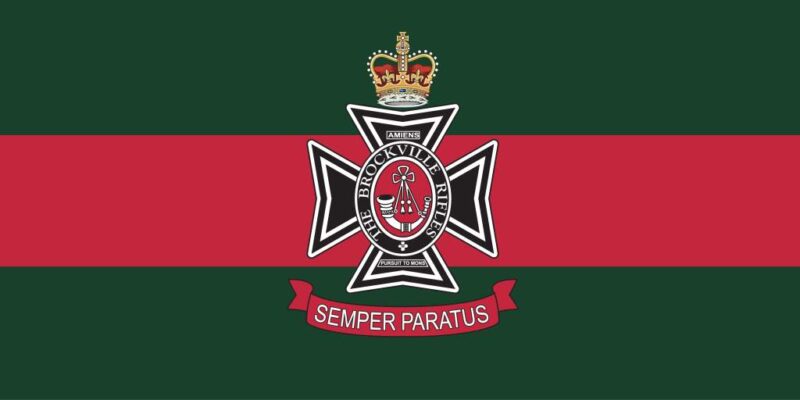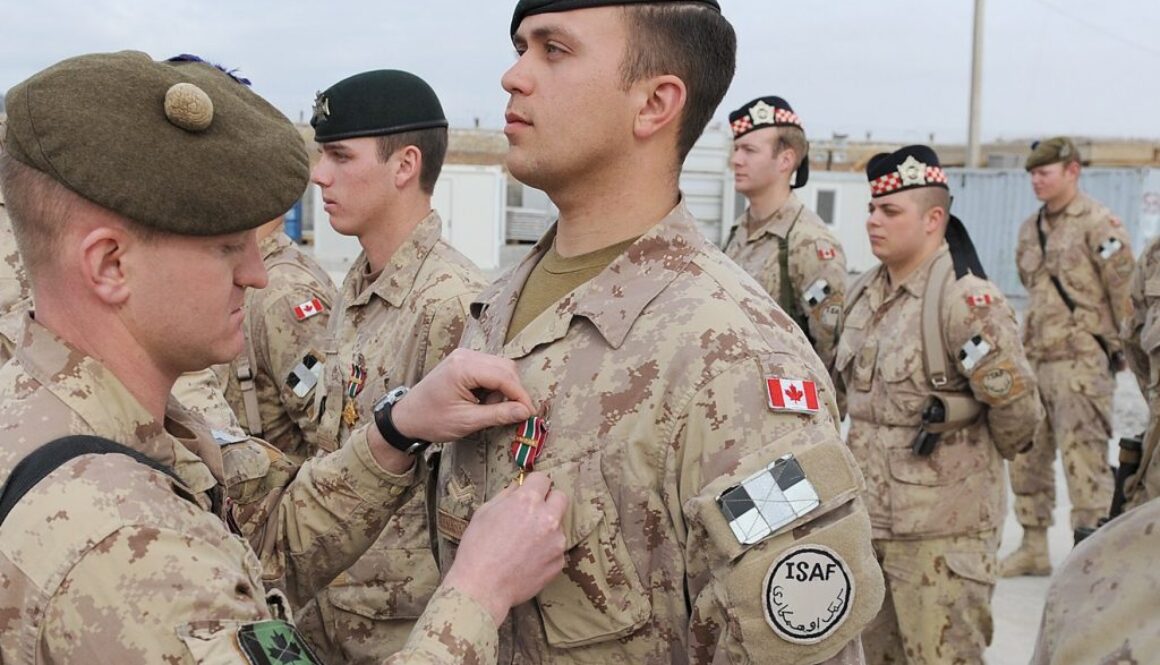The Martyr’s Circle
The sun beat down on the dust laden armoured vehicles lined up inside Sarposa Prison’s walls. Sarposa had been the site of a prison break by insurgents in June of 2008, just 3 months before my platoon and I had arrived in Kandahar, Afghanistan. I was a member of a Force Protection Platoon, attached to Golf Coy of 2RCR. The Platoon, comprised entirely of Reservists from various infantry units across Ontario and two members of The Brockville Rifles, was based out of the Kandahar Provincial Reconstruction Team (KPRT) at Camp Nathan Smith, within Kandahar City.

As a Corporal, I had volunteered in 2007 for any position available on the next rotation to Afghanistan. I wanted to do the job that I had trained so long for. I was nervously excited when I was selected for a position on the 2008/2009 rotation. In the coming year of training, I volunteered for every course and qualification I could. I hoped that the more training I received, the more likely and frequently I would be employed in operations. When I deployed, I was trained as a vehicle driver, a Remote Weapon System gunner and a Tactical Combat Casualty Care provider.
On that day at the prison, while our Corrections Canada counterparts conducted meetings with the prison officials and toured the facility to ensure prisoners were being treated properly, I was acting as a dismount for our vehicle’s crew. As usual, the majority of the crews stayed with their vehicles, a precaution in the event of an enemy attack. We lounged around telling recycled jokes, making fun of each other for various reasons and proposing highly unlikely scenarios to each other, like “Who would you rather date: Kate Beckinsale or Megan Fox?”.

I had stopped counting the number of patrols we’d made through Kandahar City to Sarposa; I even welcomed in Christmas Day at Sarposa in 2008. In keeping with the holiday spirit, I brought a stuffed Spiderman figure for a guard’s son. The boy looked to be about 6 years old, to my eye, and he often visited us when we were there, always asking for pencils or candy.


Today’s patrol felt like all the others.
Our passengers finished up their business at the prison and rejoined us at the vehicles. As I began mounting up, our interpreter, who had been conducting a scan for enemy transmissions, hurriedly approached us. He was picking up something nearby. We had picked up enemy transmissions before, and they had never led to anything, so most of us scoffed at the initial report. We assumed this transmission would be no different, until the interpreter relayed the message he had intercepted.
“They are getting in their vehicles. They will depart soon. Allah be with you.”
Our demeanor hardened when we heard those words.
The patrol loaded into our convoy of 3 RG-31’s, a South African made Armoured Personnel Carrier that resembled a lumbering oversized tan jeep, preparing ourselves for what may lay in wait outside the prison’s gates. I didn’t know what to expect; all I knew was the message from the intercepted transmission.
The patrol readied for a fight.
The gates opened, and the lead vehicle exited the prison. Gunners scanned their assigned arcs of fire, determined to eliminate any threat before it had a chance to manifest.
The convoy rolled down the road, everyone scanning as vehicles moved to the shoulder of the road to permit us unobstructed travel. Five minutes went by on the main road without incident. The patrol was now quickly approaching a large roundabout, which the local population had named Martyr’s Circle. The lead vehicle entered Martyr’s Circle and proceeded on the predetermined route.
That’s when I heard the sudden burst of machine gun fire, and the convoy slammed to a stop.
A car had driven straight at the lead vehicle and failed to follow the standard warning gestures to yield to our convoy. Our lead vehicle had exited the roundabout when its gunner, concerned that it may be a Suicide Vehicle Bourne Improvised Explosive Device (SVBIED), littered the car with a short burst from the C6 machine gun mounted on the RG-31’s roof. This sudden stop left the remainder of our convoy stuck inside the large roundabout.

Typical routine for an Escalation of Force (EOF) was to stop, secure the area, and quickly survey any damage that was caused. I sincerely hoped that this time we would forgo procedures, since this sudden stop left my vehicle exposed to several avenues of attack inside the roundabout.
“We’re going to push through, right?” I asked, looking at my fireteam partner.
Before he could answer, our Platoon Warrant Officer was pounding on the window of our vehicle and motioning for us to dismount. Begrudgingly, I dismounted and quickly moved to cover the road we had just been travelling on. My fireteam partner was only two steps behind me and took up a position to cover any oncoming traffic inside the roundabout.
We were surrounded by tall buildings and, with several roadways feeding into the roundabout, we were a prime target. There were too many ways for insurgents to come at us and, with no real cover to utilize, I was standing in the middle of the road. “I don’t like this. This is [EXPLETIVE] stupid.” I said. Just as I finished saying it, our patrol 2ic humped over to our position. The Sgt had come to check on us, gather information and begin analyzing the situation our patrol was in.
I began to hear the sound of an engine growing closer. We scanned around and saw a motorcycle in the distance, approximately 400 metres from my position. It was driving on the road we had just used, and it was heading right towards the three of us. I raised my rifle, and began waving the motorcyclist off. I noticed that the others were attempting to do the same.
The motorcycle wasn’t stopping.
All traffic around it had stopped and pulled to the side of the road, but the motorcycle showed no intentions of stopping, or even slowing down. In addition to waving, we proceeded to shout, in Pashtu, for the driver to stop. The distance was quickly dwindling between us; now 250 metres.
I was taking up a sight picture with my rifle when I heard a “Click”. I quickly looked over at the Sgt and realized that he had taken a shot only to be surprised that no round had been in the chamber of his rifle. While he proceeded to remedy the stoppage, I took my rifle off safe, and lined up the motorcycle operator in my sights; now 150 metres away.
In mere seconds, our minds had to sift through all the Rules of Engagement (ROE’s), all the “what if’s” and all the consequences that would come to bear if we made the wrong decision. It was easy to get bogged down in this mess of thinking, but right now, my thought process was overly simplified. “No one is getting past me,” I thought. My only concern in that moment, was the safety of my buddies in the patrol who were unaware of what was quickly unfolding at my position.
I began to take up the slack in my trigger and waited for the bullet to race from my rifle’s muzzle.
At the moment I thought my rifle would fire, I saw the driver’s head poke out from behind some large object on his lap. He quickly jerked the handle bars to the right, swerving at the last minute. He nearly collided with a car on the side of the road and stopped, 75 metres from the three of us, with the other compliant traffic.
“What just happened?” I thought to myself.
I released the trigger and placed my rifle back on safe. With my rifle’s optics, I scanned the stationary motorcyclist again, trying to verify if I thought he was a threat or not, and that’s when I was able to make out the object resting on his lap.
It was a baby walker.
The driver was almost shot, all because he was distracted and couldn’t see us past the baby walker in his lap. I don’t know if he was a young father with a new toy for his young kid, or just some idiot who had found something to sell in the local market, but he was lucky to be alive.
The call was made to mount up.
Someone realized that we were in a bad spot, and they had gathered enough details about the EOF to satisfy the patrol report. I scanned the area one more time as a precaution before climbing back inside my RG-31. The convoy lurched forward, starting to resume its trip back to camp. The last vehicle in the convoy was just out of the roundabout when another machine gun burst echoed off the buildings.
The lead vehicle had another EOF with a different car. Just like the previous one, this car had come barreling at the convoy and hadn’t heeded the directions to stop. Luckily, this time, we pushed through and carried on back to the KPRT without incident.
That night, while I laid in my bunk back at Camp Nathan Smith, I kept replaying the day’s events in my head. In my mind, I traveled down every outcome I could think of, playing them out, one after another. What if the Sgt’s rifle had fired as he expected? Was that intercepted message referring to us or another patrol? I had been so certain, after hearing the message, that we would be attacked. If I had gotten that shot off on the motorcyclist, what would have happened? How would that decision have impacted my life, and the lives tied to that motorcyclist? How had such an anti-climactic event generated so many questions? I finally dismissed the seemingly non-stop barrage of “what ifs” and made good use of the camp’s gym. I didn’t know it at the time, but my deployment would be filled with more “what ifs” and questions; some that would still plague my mind several years later. Ultimately, I could never answer these questions; a soldier is issued armour and a rifle, not a crystal ball.

Submitted by MCpl K. J. Tennant (The Brockville Rifles 2002-2012)
Once a Brock, always a Brock!

